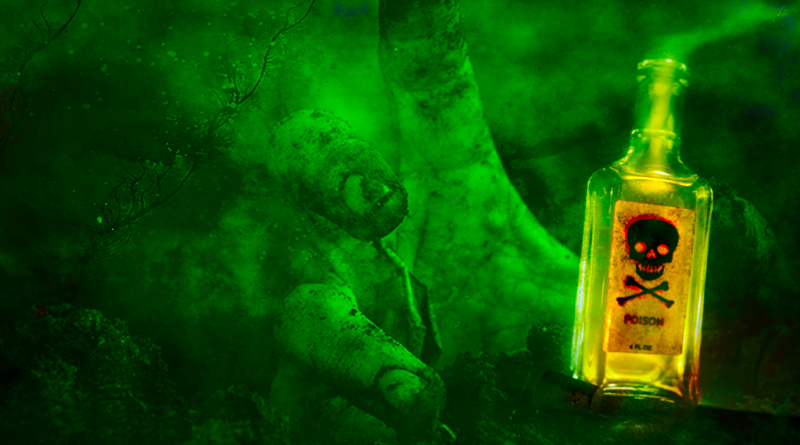Kirriemuir, 1890
In August 1890, the wife of a Kirriemuir landlord, John Webster, fell ill. The local doctor attended the ailing woman and diagnosed gastroenteritis. Within 3 days, Mrs Webster had died, but this did not conclude the matter. Suspicions were rife that something sinister lurked beneath the surface of this cut-and-dried case. John had taken out a life insurance policy for both himself and Mrs Webster, ensuring him a £1000 payment upon becoming a widower. Although her symptoms were initially diagnosed as being gastrointestinal, it had also been suggested that perhaps the diagnosis was, in fact, wrong. With murder on their minds, a warrant was issued for the exhumation of the woman’s body. Dr Littlejohn performed the post mortem on her body and found not only that it was very well preserved, showing none of the signs of post death decomposition, but also that her death was due to arsenic poisoning.
Arsenic is a chemical element and can be found in many natural minerals. Miniscule amounts of arsenic are essential elements in animals’ dietary requirements (including ours), but any more than our bodies require causes toxicity, illness and a rapid, painful death. In Victorian times, “white arsenic” was mixed with vinegar and chalk and eaten to improve (whiten) complexion. The toxicity of arsenic was quickly discovered, but until the introduction of the Marsh Test in 1836, there was no sure way to detect it, so it remained a very popular drug of choice in the act of murder. Even with the test available, arsenic was still a favourite for those with murderous intent, and it was often overlooked unless suspicion was aroused. In 1841, the Reinsch Test allowed for the detection of more poisonous metals in the body and helped pave the way for further forensic study in this field.
Both the Marsh and Reinsch tests were used on Mrs Webster’s body, with each concluding that she had indeed died from arsenic poisoning. Mr Webster was accused and stood trial for the murder of his wife at the court in Edinburgh the following February. Amidst accusations of ill-feeling between Webster and his wife, the life insurance policy and the allegations that Mrs Webster had been drinking a popular tonic known as Fowler’s Solution, which was known to have arsenic in it, the jury listened for three days. After much deliberation and no real, substantial evidence from either party, a conclusion could not be reached, and so a ‘Not Guilty’ verdict was passed. John Webster returned to his pub in Kirriemuir a free man.
– DD Tours operates walking tours in Dundee city, covering dark local history such as wars, battles, murders, diseases, riots, disasters and executions. Walk with us for an unforgettable storytelling experience.
OR
